8 Picture-Perfect Lakes in Glacier National Park
There’s plenty of water in Glacier National Park. And that’s not surprising, considering the park is named after a state of water—ice. In fact, due to past ice ages, during which vast masses of ice expanded and subsided, chiseling and carving sheer rock walls and U-shaped valleys, there are now more than 700 lakes in Glacier National Park.
Of all those Glacier National Park lakes, 131 have a name. The rest, most of which are small bodies of water, remain nameless in their wilderness locations.
“Theoretically,” the National Park Service says, a drop of water from Triple Divide Peak “can split three ways and eventually make it to the Pacific, Atlantic and Hudson Bay watersheds. Glacier’s water can be considered the headwaters of the entire continent.”
This is why Glacier and its Canadian sister park Waterton Lakes are known as the “Crown of the Continent.”
On their way from the park’s Rocky Mountain peaks to their respective ocean destination, most water drops pass through at least one of the many beautiful lakes in Glacier National Park.
Below, you’ll find some of the most spectacular Glacier National Park lakes, accessible via either roads or hiking trails.
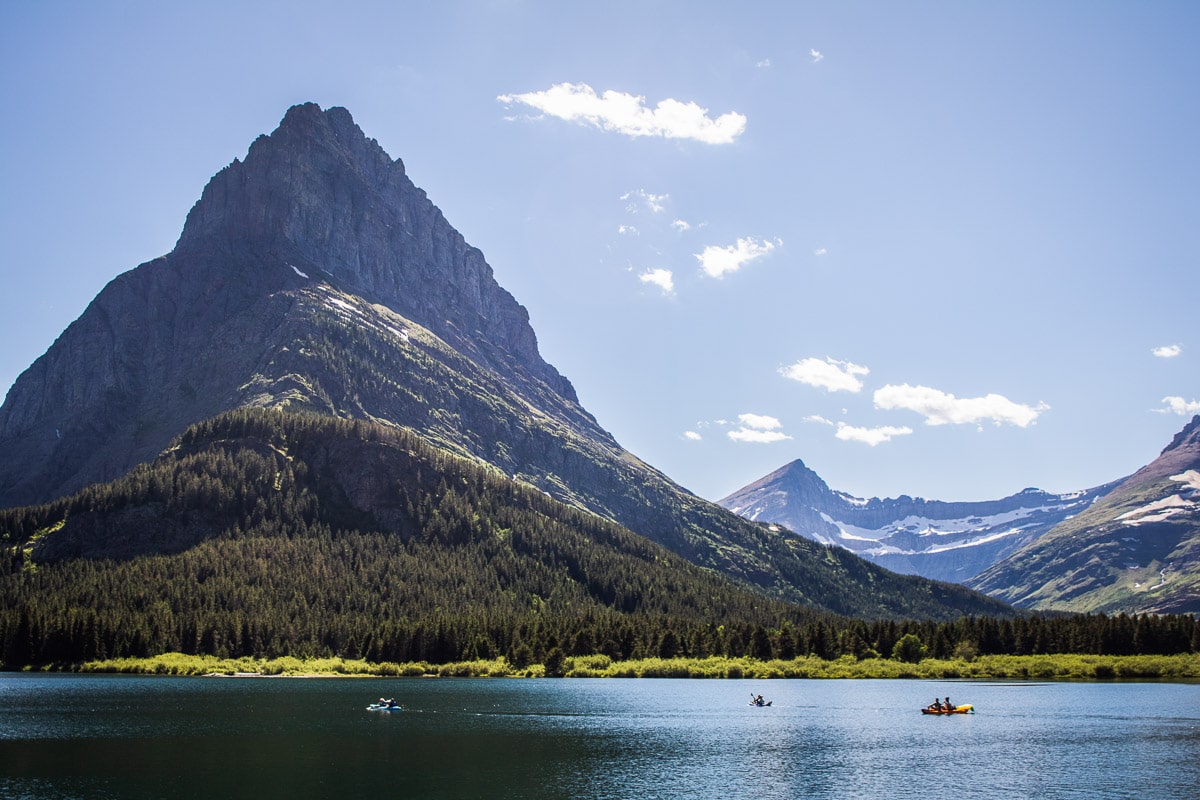
This blog post about beautiful lakes in Glacier National Park contains affiliate links. You can read more about our Terms of Use / Disclosure here.
Three Types of Lakes in Glacier National Park
Glacial Valley Lakes
When you glance at a map of Glacier National Park, you’ll notice the numerous long and narrow lakes on both sides of the park.
These lower-elevation “finger-like lakes” are located in long U-shaped glacial valleys, running down from the Continental Divide. Just like the valleys they partially fill, the lakes themselves are quite deep with steep walls.
Great examples of those large glacial valley lakes are Lake McDonald and St. Mary Lake, the two largest lakes in Glacier National Park. Kintla Lake and Bowman Lake are other major lakes occupying a glacier-carved valley.
Glacial Tarns
Another main type of lakes in Glacier National Park are so-called glacial tarns. Located at higher elevations, these smaller lakes fill ice-carved natural amphitheaters known as cirques.
Additionally, they sometimes have a moraine at their lower end. At many cases, water runs out of the lake via a waterfall, which limits or eliminates the possibility for fish migration.
Glacial tarns can have a variety of colors or clarity levels, depending on glacial activity in their vicinity. They can be a stunning sapphire blue, a milk-like turquoise or exceptionally clear.
Examples of these lakes are Iceberg Lake, Cracker Lake, Hidden Lake and Avalanche Lake.
Paternoster Lakes
A third type of Glacier National Park lakes are the paternoster lakes. As their name suggests, these are chains of smaller lakes, strung together by streams, resembling rosary beads.
Paternoster lakes are “successively lower lakes from where the glacier scoops a depression during its retreat,” the National Park Service explains. Essentially, these lakes fill the steps of giant glacial stairways up toward the Continental Divide.
The best place to see paternoster lakes in Glacier National Park is Many Glacier. Particularly the Swiftcurrent Valley is dotted with chains of paternoster lakes.
On the south side of Grinnell Point, you can hike from Swiftcurrent Lake to Lake Josephine and Grinnell Lake, one of the most popular day hikes in Glacier National Park.
Alternatively, follow the trail along Swiftcurrent Creek on the north side of Grinnell Point. This trail connects Fishercap Lake, Redrock Lake and Bullhead Lake, another chain of paternoster lakes at Many Glacier.
8 Spectacular Lakes in Glacier National Park
Now that we’ve covered the descriptions of the types of lakes in Glacier National Park, let’s check out some of the most beautiful ones in the park.
Note, though, that this is just a small selection of the hundreds of lakes that dot the park.
1. Lake McDonald
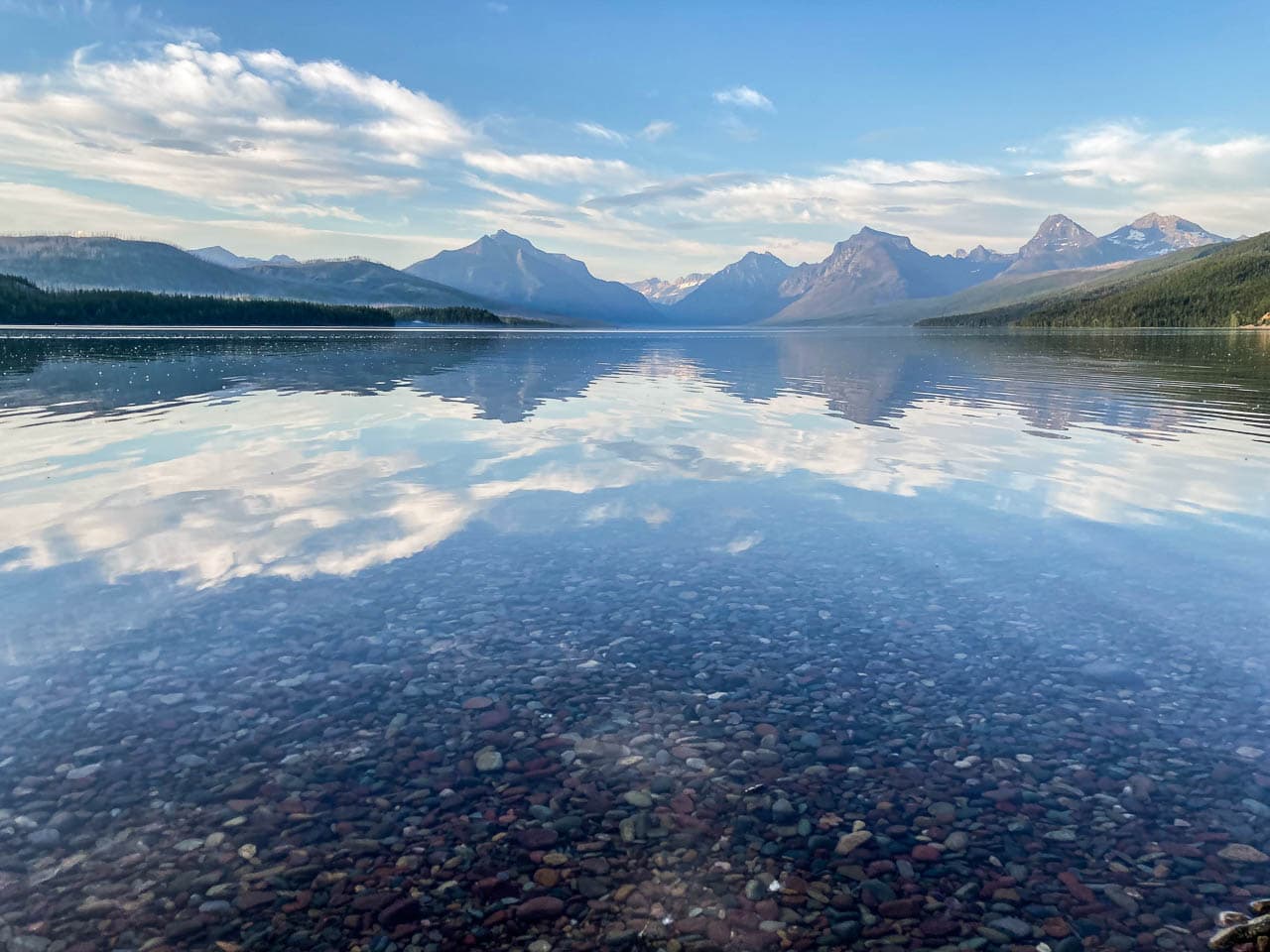
With its length of 10 miles and depth of nearly 500 feet, Lake McDonald is the largest lake in Glacier National Park.
This is the center of tourist activity on the park’s West Side. Apgar Village sits on its south shore, home to inns and cabins, boat rentals and pebble beach, souvenirs shops and other services.
On the northeast shore of the lake, Lake McDonald Lodge is a historic hotel dating from 1913-1914. Older than the Going-to-the-Sun Road, the lodge faces the water, still offering scenic boat tours on this spectacular glacial lake.
Towering peaks form the beautiful backdrop of Lake McDonald, perfectly framing the lake’s glassy surface.
Additionally, due to its size and wide-open views, Lake McDonald is one of Glacier National Park’s best locations for sunset viewing and stargazing. If you’re lucky enough, you might even see the Northern Lights dancing in the sky high above the lake.
2. Avalanche Lake
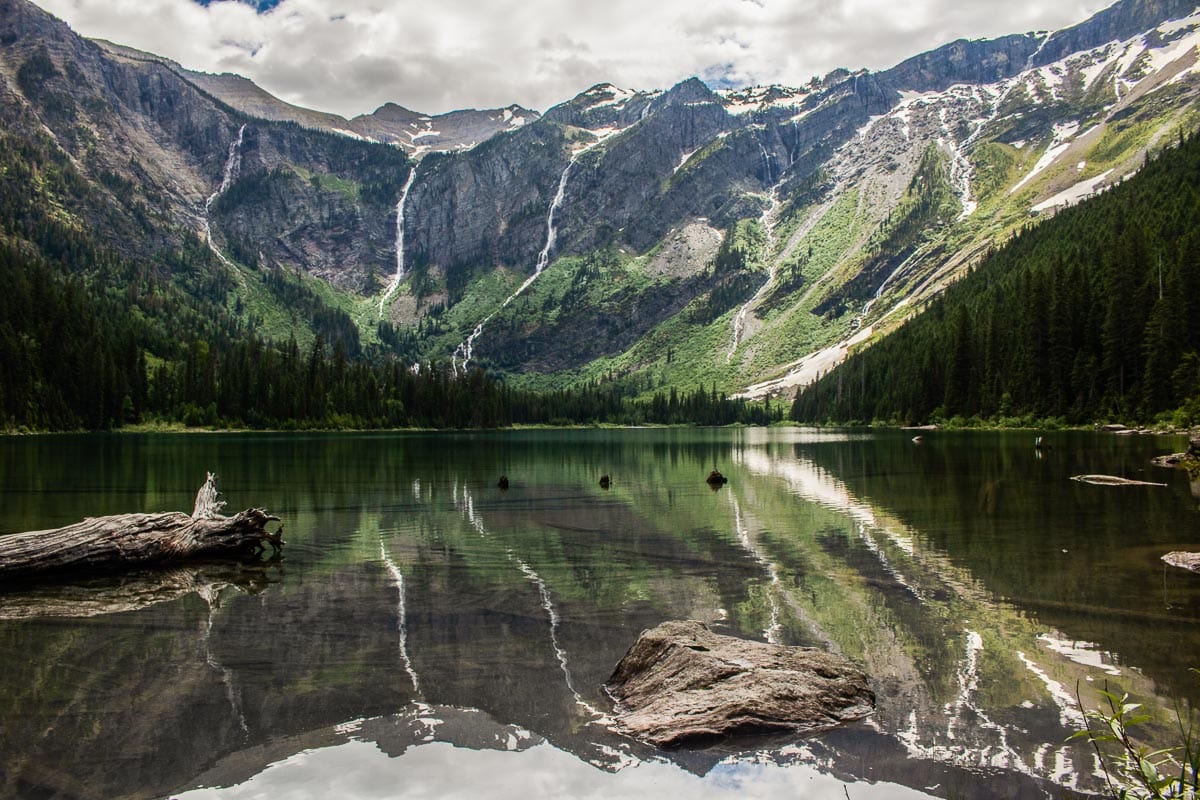
One of the most popular hikes on the west side of Glacier National Park is the Avalanche Lake Trail.
The start of this awesome hike is at the Avalanche Picnic Area, just north of Lake McDonald. First you’ll follow the Trail of the Cedars before heading into the scenic Avalanche Gorge.
The trail then climbs gradually through a dense forest, the occasional clearing offering a glimpse of the towering glacier-carved rock walls besides you.
Shimmering Avalanche Lake is the ultimate destination of this hike, backed by a cirque with sheer cliffs and lined with countless waterfalls. Several benches and logs provide a place to rest and admire this stunning glacial lake.
The roundtrip distance of this hike is 4.6 miles. Allow for 2-3 hours of hiking and taking in the view.
3. Hidden Lake
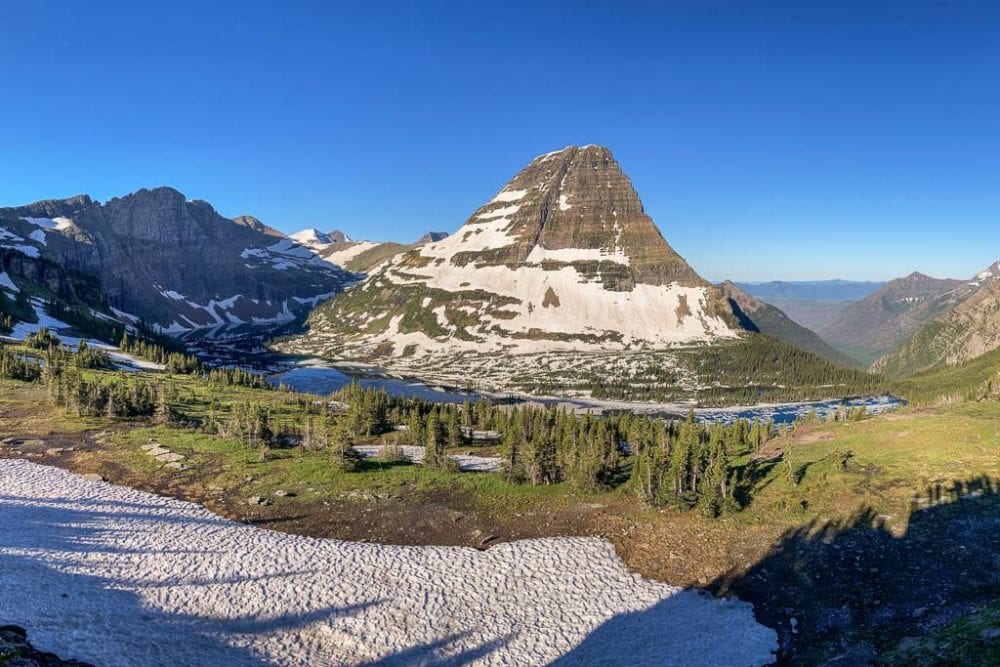
One of the most visited places in Glacier National Park, Hidden Lake lies, well, hidden below Logan Pass, a short and beautiful hike from the visitor center.
This stunning alpine lake is reached via the Hidden Lake Overlook Trail, which continues down to the lake if it’s not closed due to bear activity. The trail runs through gorgeous alpine meadows, covered with wildflowers in summer and home to abundant wildlife.
The lake itself is an absolute beauty, backed by striking Bearhat Mountain and flanked by towering Clements Mountain and Reynolds Mountain.
The panoramic view from the Hidden Lake Overlook is one of the best in the entire National Park System.
On the way, watch for animals such as bighorn sheep, mountain goats, pikas and marmots. Additionally, this area is also one of the best places to see grizzlies in Glacier National Park.
4. St. Mary Lake
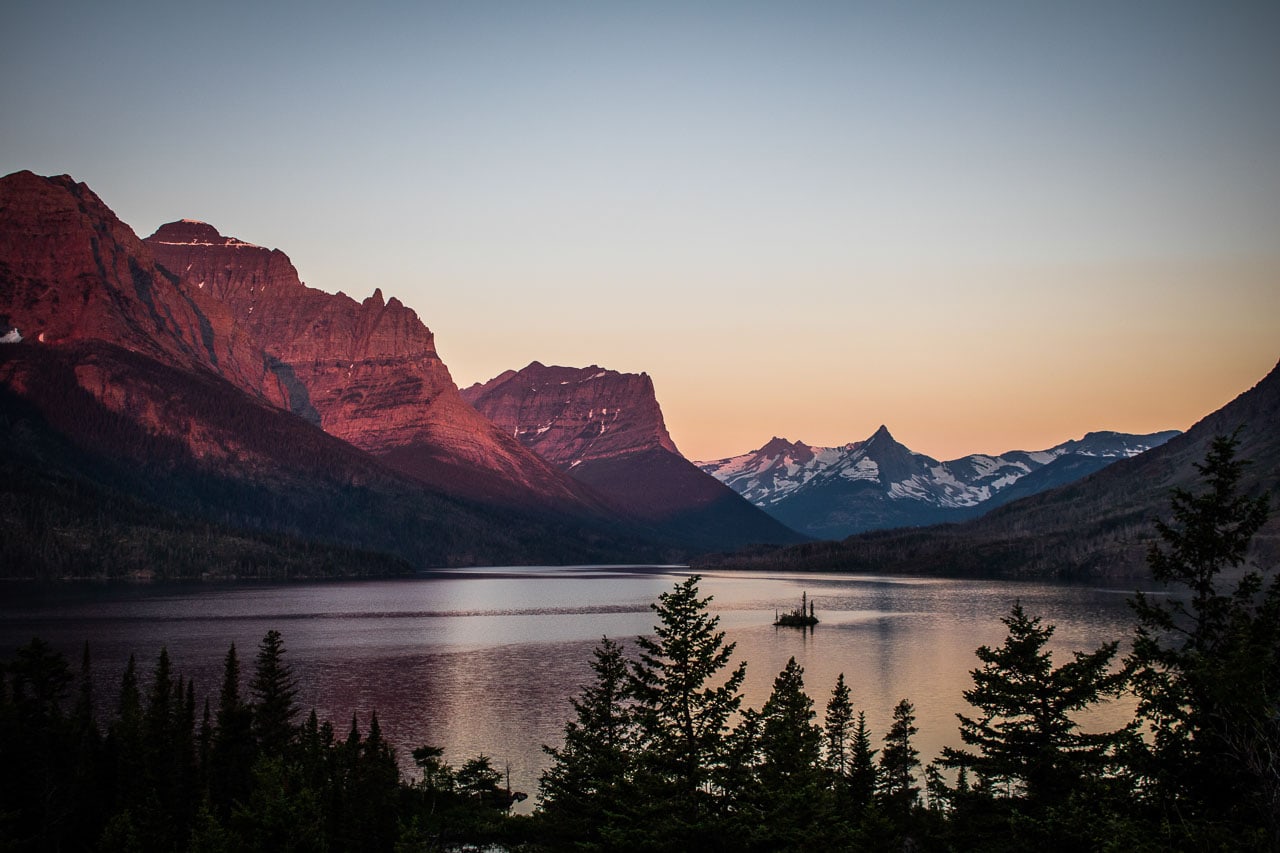
The second largest lake in Glacier National Park after Lake McDonald, St. Mary Lake fills a long glacial-carved valley on the park’s east side.
About 10 miles long and 300 feet deep, this sprawling lake sits at the meeting point of the Rocky Mountains and Montana’s Great Plains. Majestic mountains surround its western end, while grasslands and meadows dominate the eastern shores.
There are numerous attractions around St. Mary Lake, from Virginia and St. Mary Falls to Sunrift Gorge, Rising Sun and the picture-perfect Goose Island Overlook.
The St. Mary Visitor Center is located near the lake’s eastern end, surrounded by meadows home to lots of wildlife.
When driving the Going-to-the-Sun Road along St. Mary Lake, watch for mule deer and elk, as well as both black bears and grizzly bears.
I recommend exploring this area around sunrise, when the water is often completely still and mirrorlike, providing perfect reflections of the mountains.
You can find lodging and campsites at Rising Sun, as well as in St. Mary Village.
5. Redrock Lake
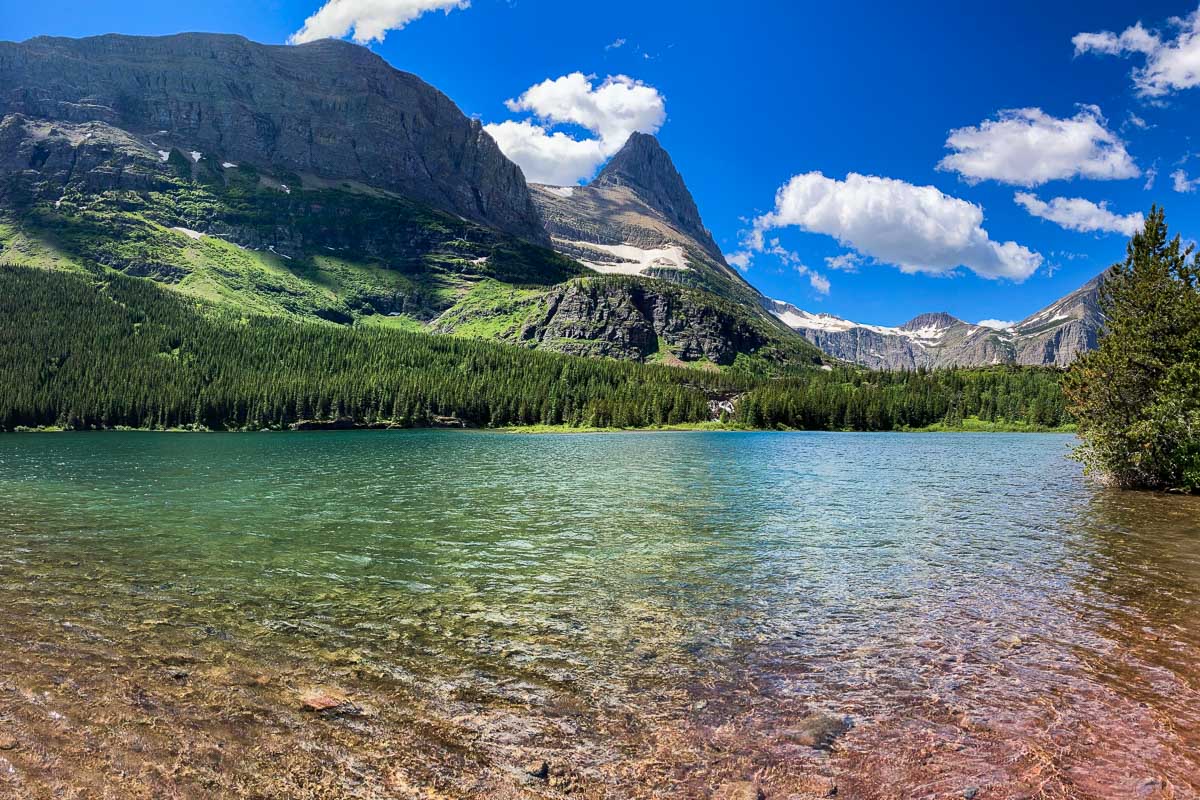
Along with Fishercap Lake, Bullhead Lake and several smaller ponds, Redrock Lake makes up the chain of paternoster lakes in the Swiftcurrent Valley in Many Glacier.
This particularly lake is a popular hiking destination among families, mainly thanks to the picturesque and accessible Redrock Falls on the lake’s west shore. You can get there on one of the nicest and easiest lakeshore trails in Glacier National Park.
From the Swiftcurrent Pass Trail and Redrock lakeshore, a number of major mountains are clearly visible, including Grinnell Point and Mount Grinnell, as well as Mount Wilbur, Mount Henkel and Altyn Peak.
Beyond Redrock Lake, the trail continues to Bullhead Lake before ascending Swiftcurrent Pass toward Granite Park Chalet.
It’s also worth noting that this area is exceptionally popular among moose. You might see one or two along the trail or down by the water.
6. Swiftcurrent Lake
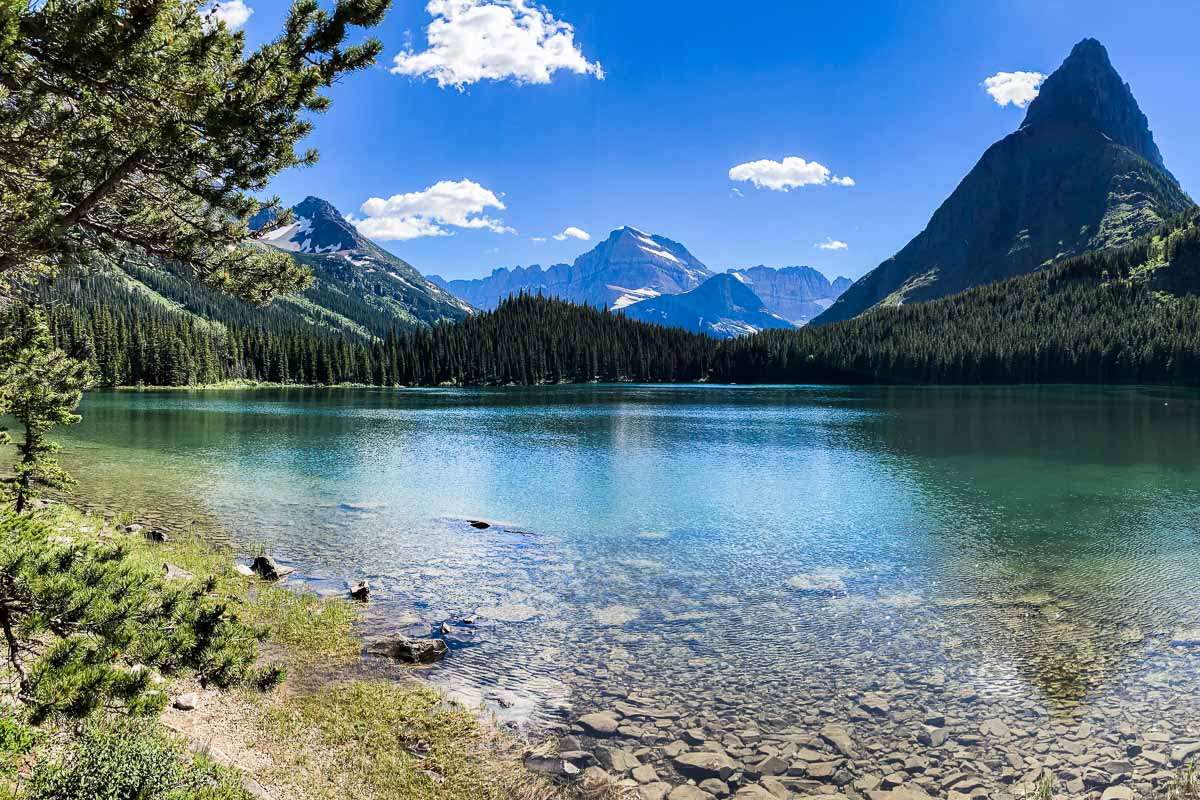
Fed by Swiftcurrent Creek and the meltwater of fast-disappearing glaciers like Grinnell Glacier, Swiftcurrent Lake lies in the heart of Many Glacier.
This picture-perfect lake is home to the iconic Many Glacier Hotel, one of the greatest lodges in Glacier National Park. It’s also one of the so-called paternoster lakes in Many Glacier, connected to scenic Lake Josephine.
The Swiftcurrent Nature Trail loops around Swiftcurrent Lake and is one of the nicest easy Glacier National Park hikes. On the way, keep your eyes out for moose and deer, while the occasional bear may be spotted as well.
Indeed, this is arguably the main hub of wildlife in Glacier National Park. With a pair of binoculars, you can often see grizzlies foraging on the surrounding slopes.
Other high-profile animals you might see here are bighorn sheep and mountain goats.
In addition to hiking the trail around the lake, you can also go on boat tours, enjoy some fishing or kayaking.
7. Lake Josephine
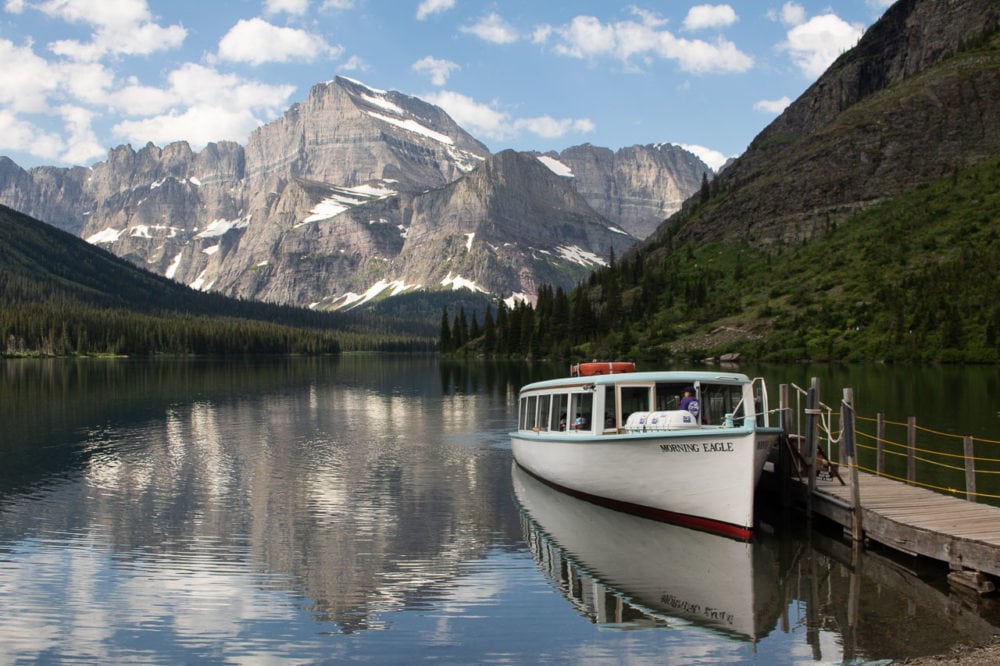
Lake Josephine is to the southwest and just above Swiftcurrent Lake, connected by a short stream.
The only ways to get here are either via the Swiftcurrent Nature Trail or with a boat shuttle. Both options require you to walk a short section of the Grinnell Glacier Trail over a hill between the two lakes.
Once on the north shore of Lake Josephine, you can continue on another boat to the other side of the lake.
Alternatively, the Grinnell Glacier Trail follows the lake’s west shore, an absolutely beautiful hike through lakeshore vegetation and below towering peaks.
8. Grinnell Lake
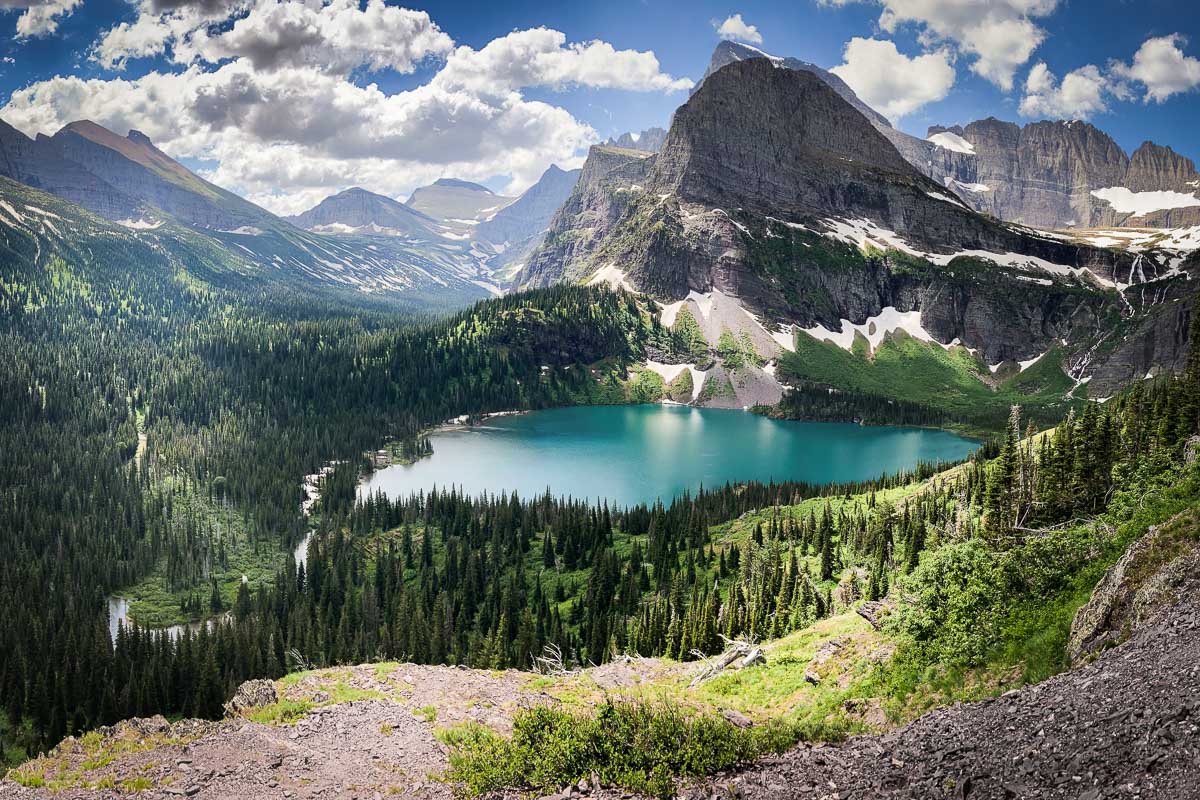
Located beyond Lake Josephine, Grinnell Lake is the last lake in this three-lake series of paternoster lakes. You can get there via a trail that start at the boat dock on the south shore of Lake Josephine.
However, the greatest view of Grinnell Lake is from high above it on the Grinnell Glacier Trail.
This spectacular alpine trail runs on the steep flank of Mount Grinnell to the north and west of the lake. It ultimately ends at the iconic Grinnell Glacier, one of only a couple of accessible glaciers in Glacier National Park.
From the Grinnell Glacier Trail, you can admire the stunning milky turquoise color of Grinnell Lake, the result of rock flour, tiny particles of silt, created by the glacier above.
More Beautiful Lakes in Glacier National Park
As I said in the beginning of this article, there are hundreds upon hundreds of lakes in Glacier National Park.
Besides those described above, the park’s home to many other beautiful bodies of water that are accessible via roads and/or trails, including the following:
- Bowman Lake
- Two Medicine Lake
- Cracker Lake
- Iceberg Lake
- Kintla Lake
- Upper Waterton Lake




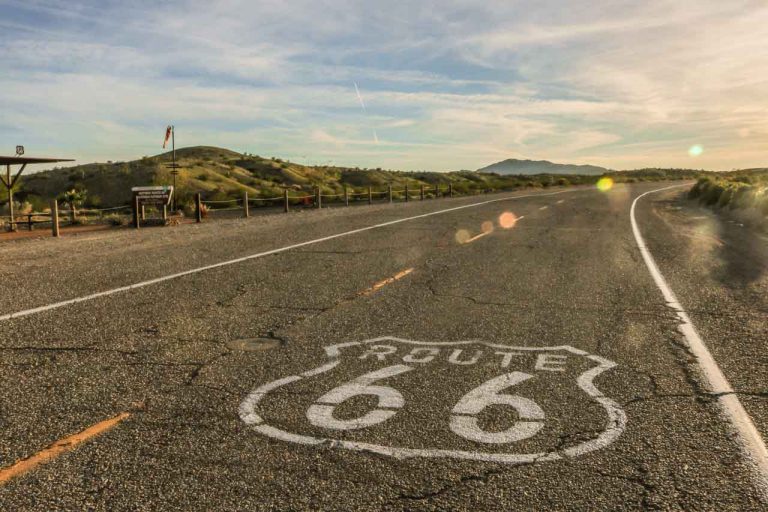


Absolutely stunning
You forgot to mention my favorite…Lake Ellen Wilson!
That does look like yet another beautiful lake in Glacier National Park, Gilbert! Haven’t made it there myself yet (it looks like it’s an overnight hike), but I promise I will keep updating this post with additional lakes as I visit more of them myself in the future.